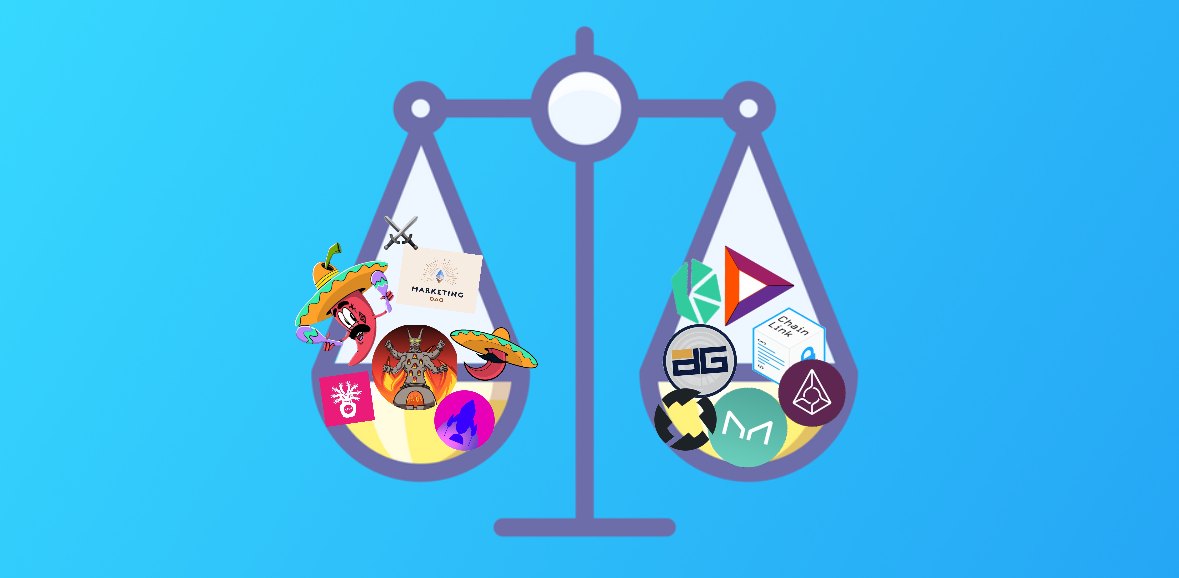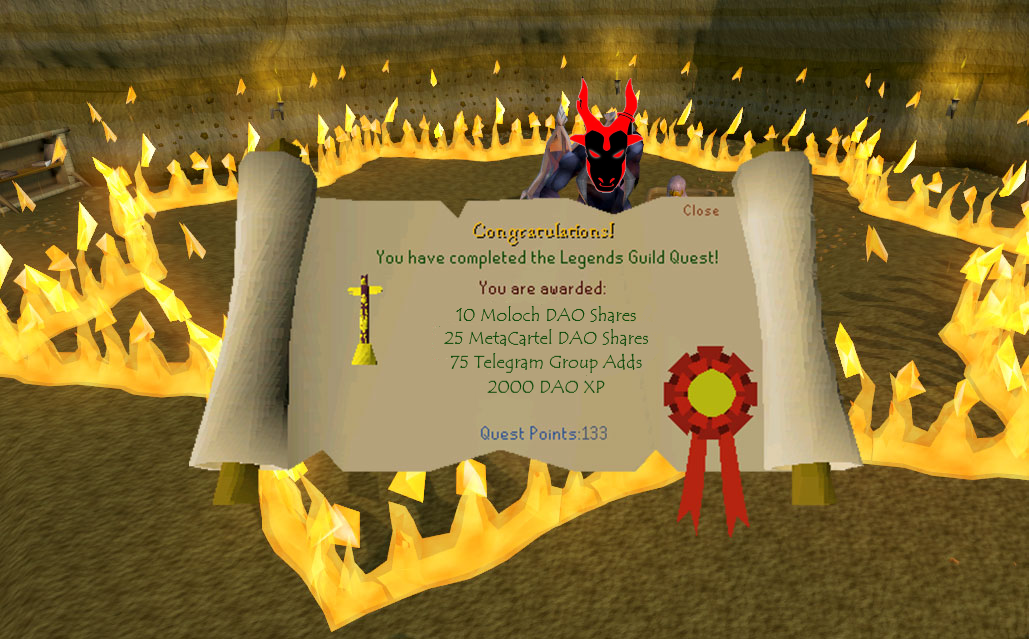How to correctly understand DAO tokens?
With the commercialization of DAO, DAO's economic model has begun to be discussed by more and more people. What economic model should DAO design to meet the needs of investment and even speculation without violating the essence of DAO? First of all, we should sort out the DAO token and have a correct understanding of it. Based on this, we can design a more perfect DAO economic model, and we also know how to invest in a DAO.
—— Typto Author: James Waugh
Translation: Typto

- Data Increment: New Business Opportunities for Enterprise Services + Blockchain
- DeFi pattern or big change, Tether announces entry into DeFi, integrates Lightning loan agreement Aave
- Is individual mining a thing of the past? Mining these coins in 2020 is still profitable
The terms "DAO shares are Tokens & Tokens are DAO shares" are getting harder to distinguish, but that's a good thing!
Translator's Note: share is a type of proof of equity granted to members by DAO. It is derived from members 'contributions (ETH or work), and represents the weight of members' participation in decision-making and the share of DAO public bank assets.

Picture from Vitalik article, Logos from DAO & Tokens ❤
In general, the past 36 months
DAO is a highly community-driven ecosystem with few opportunities for speculation;
Token has always been a highly speculative ecosystem, and there is almost no community.
However, it can easily be transformed into another way ⚖️
Ethereum provides us with the tools to create programmable currencies, which means we can create a DAO Share market for speculation, not a Token market, or a DAO share just for donation purposes. It doesn't matter whether we call it ERC-20, MolochDAO, ERC-721 or Aragon DAO, what is important is what these things can achieve.

DAOs & tokens are not apples and oranges!
ERC-20 Token is just a smart contract that sends a tradable token to your Ethereum address. The contract has any meaningful characteristics and restrictions on the asset. Similarly, the DAO share can also have any meaningful Features and limitations.
These complex things of smart contracts are irrelevant to us. What we should pay attention to is that the mechanism creates credible neutrality . Vitalik describes this concept: In essence, the mechanism is credible and neutral. If you only look at the design of the mechanism , It is easy to see that the mechanism does not discriminate or oppose anyone.
Now, neither Token nor DAO share is inherently trustworthy and neutral . This is because these two systems can be designed to be trustworthy and neutral, or they can be completely ignored. So the mechanism (DAO share or token) is not the focus, the focus is on design and implementation .

The reason why this connection between mechanisms is important is that in the foreseeable future, we will see many of the old-fashioned concepts associated with DAO beginning to enter the field of token design. At the same time, many ERC-20 token attributes will begin to be referenced by the DAO.
For Token, we consider the relevant economic leverage to be "Token Economics", that is, the ability to establish different incentive mechanisms in the token or platform. For DAO, we haven't summarized similar terms, but there are many different mechanisms inside DAO to achieve the same results as token economics. In fact, it makes more sense to include incentives in the community than in the token.
Let's look at a few examples:
To date, DAOs (such as MolochDAO) have focused only on donations, not profits. But with MetaCartel Ventures launching the first for-profit DAO (since The DAO ), we are starting a new chapter in the DAO share experiment.
"We want to coordinate on the funding side, and we want to delegate some of the responsibilities to the contract … … which will itself set off a wave of edge cases and emerging things. For us, its mission is to show the world What is possible. "-Ameen Soleimani (Moloch DAO founder)

Rocket is another example of a DAO project. Over time, this DAO project will become more and more like a token. Each DAO share represents the ownership of the NFT bank and the potential income of each NFT loan .
These two DAOs mark the first step of the DAO mechanism towards a more open development trend, such as fundraising and even speculation. Of course, we need to pay attention to the madness of the token world in 2017, but we don't want to drain our children and bath water together. The composability of finance and community Lego bricks will open a new era of token economy.

On the other hand, we have seen many different token projects start using DAO-like mechanisms . Kyber, Aave, Synthetix, and DeversiFi have all begun experimenting with these mechanisms to increase their community's participation in the management of projects, tokens, and funds.
As I mentioned in a previous article , there are increasingly clear signs that the number of DAOs will only increase, and the relationship between these tokens and DAOs will only become more consolidated. More experiments in themselves means victory , and extending these ideas to the wider Ethereum ecosystem is not as confusing as it seems.

So far, most Moloch DAOs (referring to those DAOs based on the Moloch protocol, such as MetaCartel) are licensing systems , which means that joining these DAOs and accumulating DAO shares is known to some extent by their users. Although this permission structure apparently sacrifices a large number of decentralized features, it plays a huge role in converging the vision of a particular community .
Let ’s look at two cases: the first case is that the requirement to join a community is to purchase an ERC-20 token on uniswap (or any other token community), and the second case is the requirement to join a community It is to apply to join a licensed group and promise to "mortgage" ETH to get DAO's share. The threshold for joining the second community is obviously much higher than joining the first community . However, the results we see indicate that these Moloch DAOs without direct economic incentives (such as holding a large number of speculative tokens or earning salaries) have shown us impressive results .
When we scale to millions of people, it may become unsustainable, but this is still a reliable data worth learning, and the impact of holding tokens or earning a salary is less than based on a common vision DAO.

After all, DAO share is just another form of token , and both should have credible neutrality as their ultimate goal . Whether it is a transferable DAO share or a non-transferable token, the mechanism design is the focus , rather than comparing the differences between DAO share and token.
Regardless of the mechanism and its market positioning, we should pay more attention to the results achieved by its stated goals rather than the mechanism itself.
Axia Labs is one of the core contributors to MetaCartel DAO and other DAOs in the field. Since its inception in 2017, Axia Labs has been working with innovators, businesses, and token projects, and has tried to work with every DApp, DAO, and token to empower this ecosystem and welcome popular projects in this field Build incentives and governance structures.
In the coming months, we will continue to explore these new DAO models and look forward to reinvigorating the spirit of coordinated innovation we saw in 2016.
Thanks to Peter 'pet3rpan' Cooper Turley & Callum Gladstone for these ideas and this article.
We will continue to update Blocking; if you have any questions or suggestions, please contact us!
Was this article helpful?
93 out of 132 found this helpful
Related articles
- QKL123 market analysis | Crypto assets are highly correlated, and Ethereum wants to go independent? (0311)
- Why doesn't Bitcoin look like a bull market?
- What is the reason for the Bitcoin crash? The decline in the traditional market, or the sale of PlusToken
- YouTube cryptocurrency ban strikes again, this time they deleted two videos
- Tracking Plus Token: Bitcoin dropped 20% in 2 days, is it the smashed disk?
- There are investment bosses who bless and do not resist. Why is the DeFi project Paradigm Labs "dead"?
- Research Report: Can Bitcoin Be a Safe-Haven Asset?






